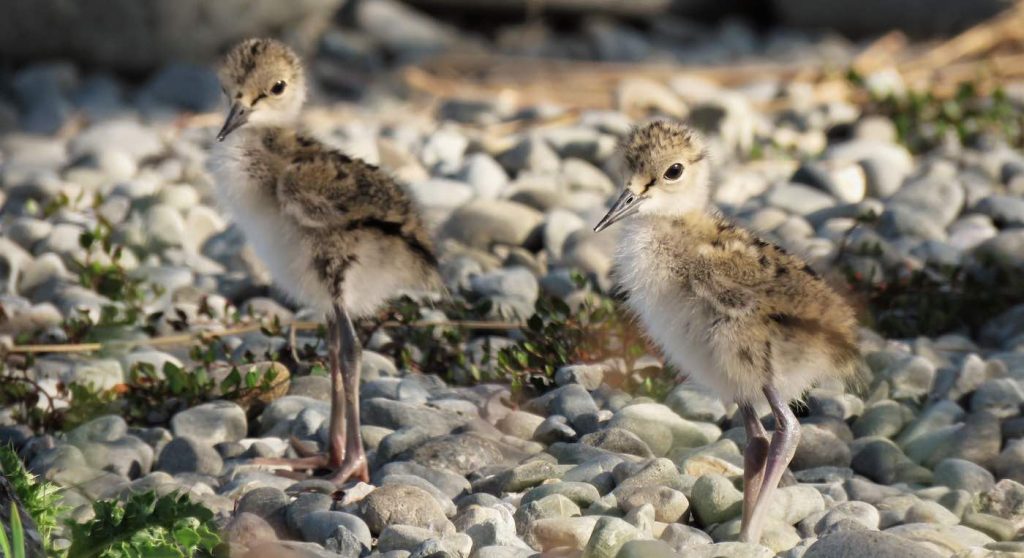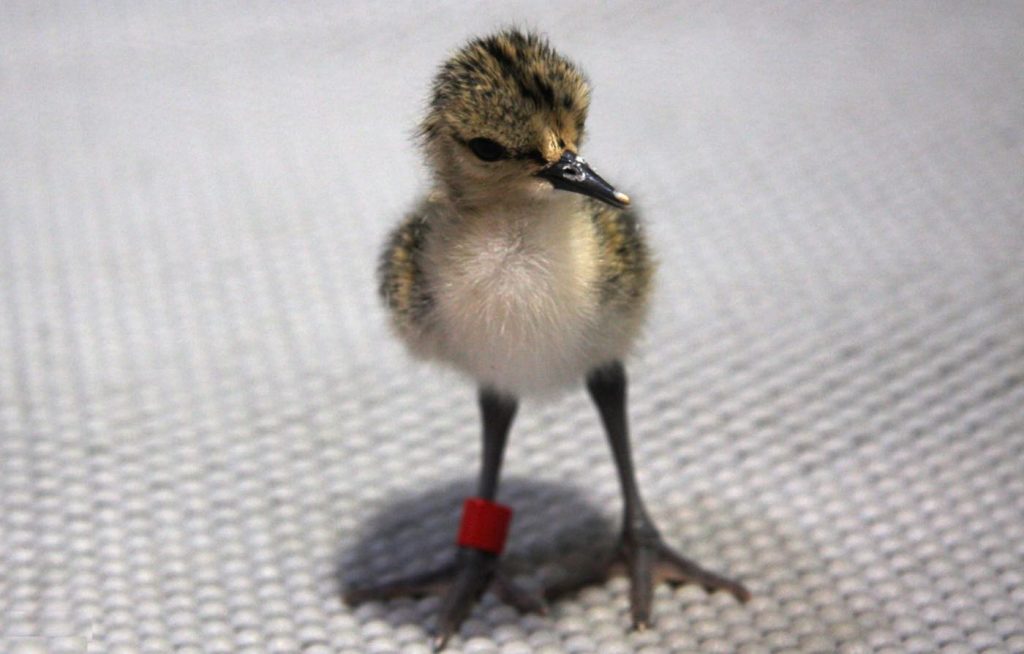A decades-long fight to recover the world’s rarest wading bird is turning a corner with the success of New Zealand’s massive effort to prevent extinction of their most unique and amazing species.

A nearly 40-year program to protect the kakī, or black stilt is paying off, with a record number of adult kakī now living in the wild. Thanks to the ongoing work of the New Zealand Department of Conservation’s Kakī Recovery Program, the population of adult kakī has increased by 30 percent to 169, the largest increase in nearly 40 years.
The kakī is the ‘Man vs Wild’ of the wading bird world. After all of its friends have left New Zealand’s Southern Alps for the winter, the kakī shelters in place, toughing out temperatures as low as minus 4 degrees (-20 C).
It’s the only non-migratory wading bird that breeds in this high country region.
Global Wildlife Conservation funded the majority of newly expanded housing that has allowed the DOC to double the number of birds that they’ve been able to hatch and house as part of this successful breeding and reintroduction program.
This includes a new brooder room for hand-rearing chicks and a new aviary for juvenile kakī, which could mean up to 60 extra birds released into the wild each year. (See the video below…)

“New Zealand’s commitment to turn the tide on the decline and extinction of native species shows their leadership in biodiversity conservation,” said Wes Sechrest, GWC chief scientist and CEO.
Kakī are found only in New Zealand, where the Māori regard the bird as a taonga species, or a living treasure. The adult birds have distinct black plumage and long pink-red legs. In addition to predation, they face habitat destruction and disturbance in the South Island’s Mackenzie Basin. The kakī are a key indicator species for the future recovery of the native fauna and flora of the unique basin ecosystem.
Kakī were once widespread across a unique system of braided rivers in New Zealand. But the introduction of non-native predators, including stoats, ferrets, feral cats and rats, decimated the population, leaving a mere 23 adults and four breeding pairs in the wild by 1981.
The Te Manahuna Aoraki Project, which GWC also supports, is helping ensure that the birds that are part of the conservation breeding program have a safer environment to be released into. This large-scale conservation project aims to restore the iconic landscapes and threatened species of the upper Mackenzie Basin and Aoraki/Mt. Cook National Park.
“Thanks to the team effort involved in the Department of Conservation’s successful captive breeding program and amazing support from partner organizations, there are 40 more adult birds living and breeding in the wild than this time last year,” said Minister of Conservation Eugenie Sage.
DOC currently has 116 juveniles and 11 older kakī in their care. This season, DOC collected eggs from three breeding pairs in their facilities and 26 wild breeding pairs. They then artificially incubated the kakī and raised the young chicks, who were held over winter and released into the wild at nine months of age.

“With these impressive efforts, we hope to see the kakī join the ranks of species that have been successfully brought back from the brink of extinction, including the black-footed ferret, the California condor, and golden-lion tamarins,” Sechrest said. “We are proud to support the conservation not only of kakī, but of their incredible home in the upper Mackenzie Basin and Aoraki/Mt. Cook National Park.”
See where they are hatching in the video below…
FLY This Story of Human Compassion to Your Friends on Social Media…




















